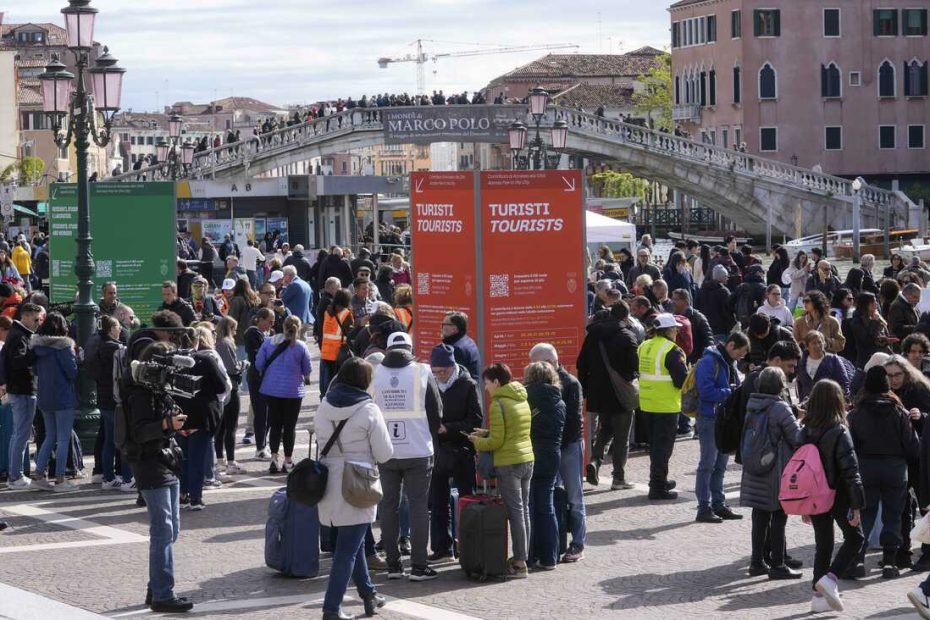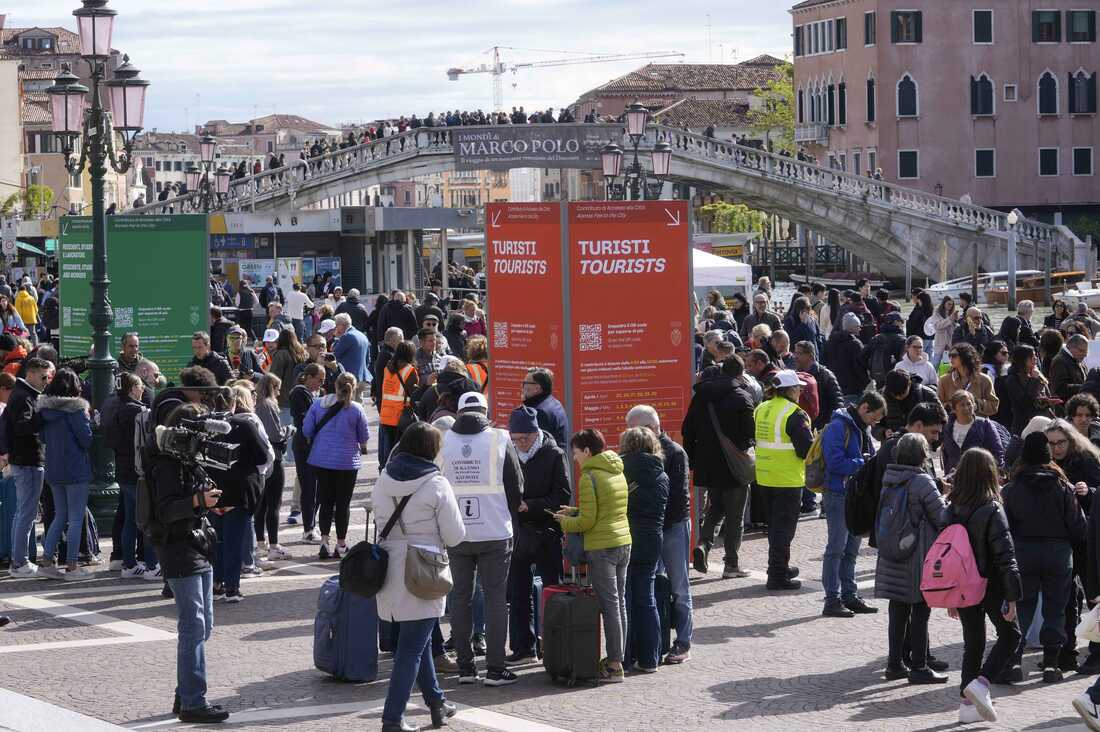
Stewards check tourists’ QR code access outside the main train station in Venice, Italy, on Thursday.
Luca Bruno/AP
hide title
toggle title
Luca Bruno/AP
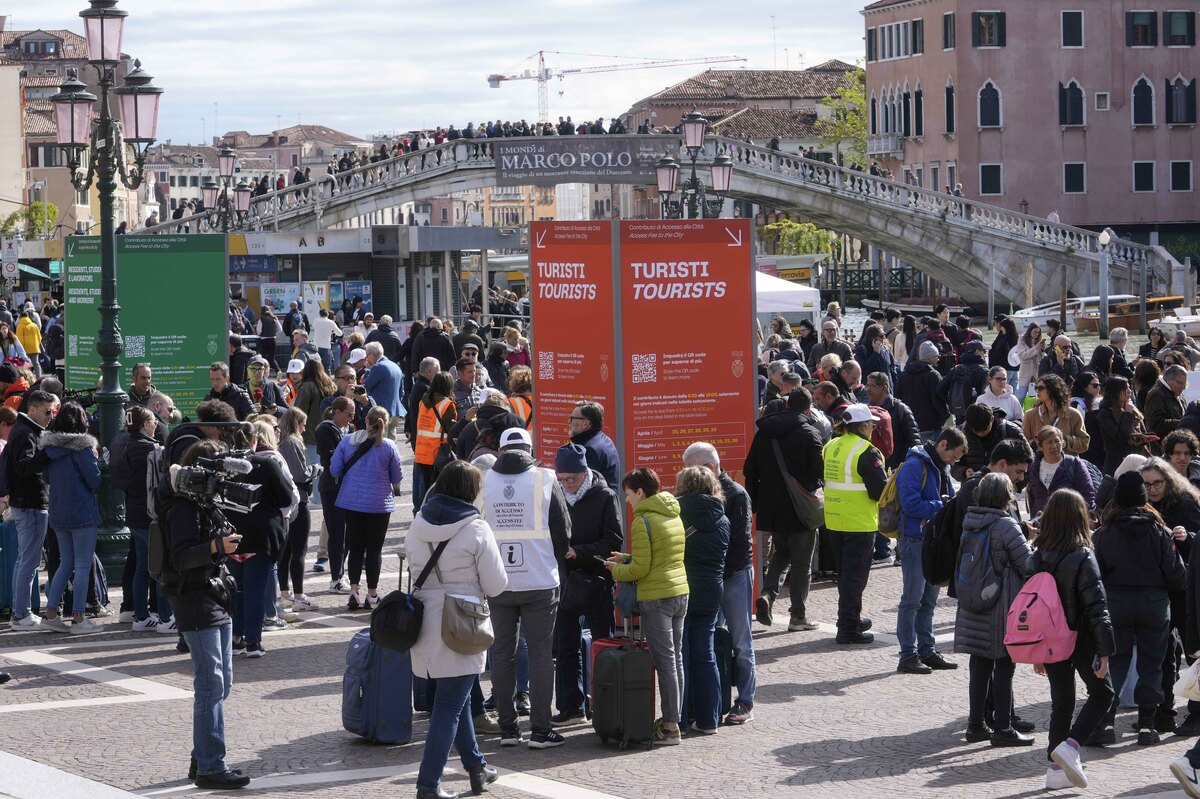
Stewards check tourists’ QR code access outside the main train station in Venice, Italy, on Thursday.
Luca Bruno/AP
VENICE, Italy — Under the gaze of the world’s media, the fragile lagoon city of Venice launched a pilot program Thursday to charge hikers a 5-euro (about $5.35) entrance fee that authorities hope will discourage visitors from arriving on peak days and make the city more livable for its dwindling residents.
Visitors arriving at Venice’s main train station were greeted with large signs listing the 29 dates through July of the test phase of the plan that also designated separate entrances for tourists, residents, students and workers.

“We need to find a new balance between tourists and residents,” said Simone Venturini, the city’s top tourism official. “Of course, we must safeguard residents’ spaces and discourage the arrival of daylight.” hikers on some particular days.”
However, not all residents are convinced of the effectiveness of the new system. discourage mass tourisminsisting that only a population resurgence will restore balance to a city where narrow alleys and water buses are often packed with tourists.
Hundreds of Venetians protested the program, festively marching through the city’s main bus terminal behind banners reading “No to tickets, yes to services and housing.” Protesters briefly clashed with police in riot gear who prevented them from entering the city, before changing course and entering over another bridge escorted by plainclothes police. The demonstration ended peacefully in a square.
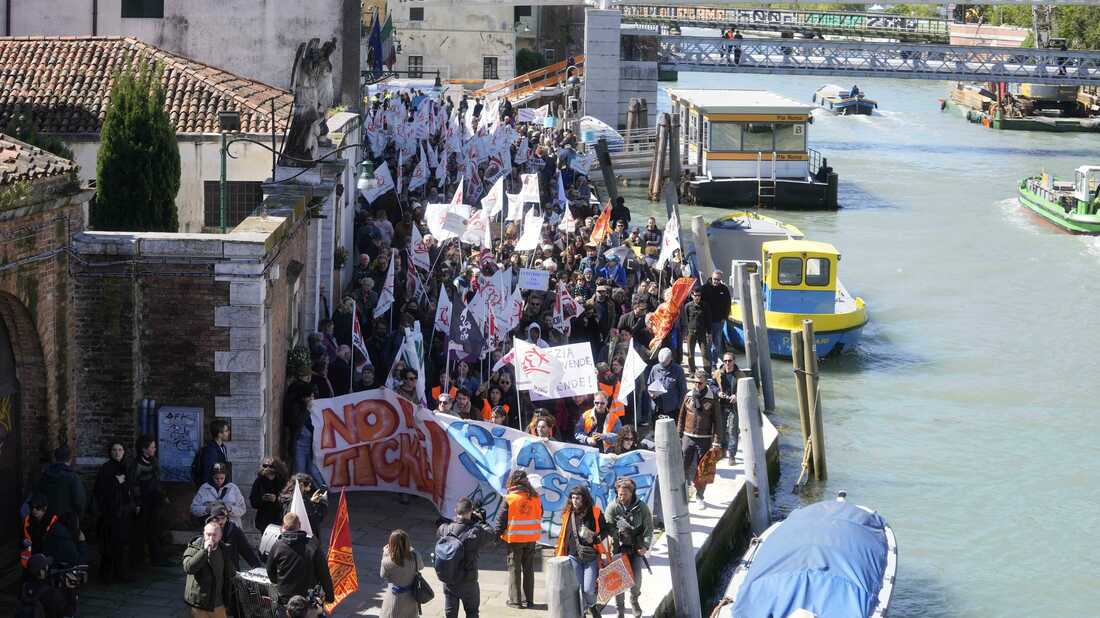
Citizens and activists organize a protest against the Venice tax in Venice on Thursday.
Luca Bruno/AP
hide title
toggle title
Luca Bruno/AP
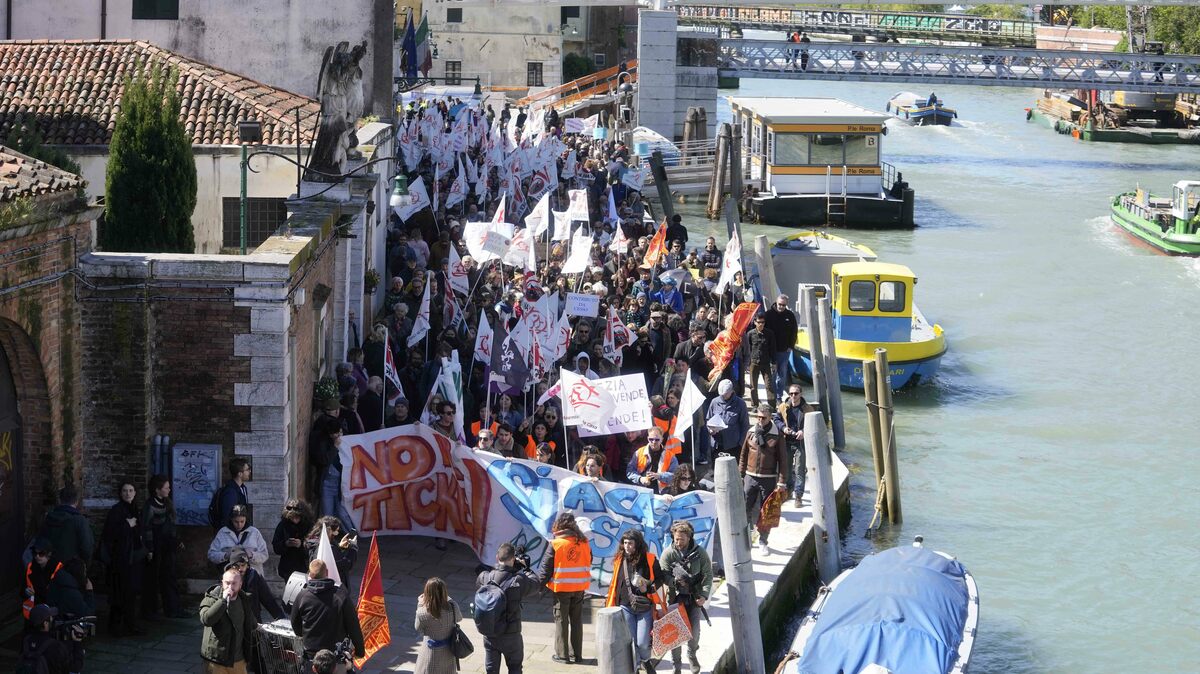
Citizens and activists organize a protest against the Venice tax in Venice on Thursday.
Luca Bruno/AP
Tourists arriving at the main station encountered almost as many journalists as there were stewards available to politely guide anyone unaware of the new requirements through the unloading process. QR code to pay the fee.
Arianna Cecilia, a tourist from Rome visiting Venice for the first time, said she thought it was “strange” to have to pay to enter a city in her home country and be funneled through separate entry routes for tourists. She and her boyfriend were staying in nearby Treviso, so they downloaded the QR code as necessary, but she was still caught off guard while enjoying her first view of the Venice canals when she saw the entrance signs and her boyfriend telling her who takes out the ticket.
On the other side of the entrances, workers in yellow vests carried out random checks at the train station. Violators face fines of 50 to 300 euros ($53 to $320), but officials said “common sense” was being applied in the rollout.
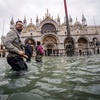
The requirement applies only to people who arrive between 8:30 am and 4 pm Outside of those hours, access is free and without controls.
Venice has long suffered from pressure from overtourism and officials hope the pilot project can help provide more accurate figures to better manage the phenomenon.
The city can track the number of hotel visitors, which last year was 4.6 million and down 16% from pre-pandemic highs. But until recently, only the number of daily visitors, who make up the majority of the influx to Venice, could be estimated.

Stewards check access to a tourist’s QR code outside Venice’s main train station.
Luca Bruno/AP
hide title
toggle title
Luca Bruno/AP
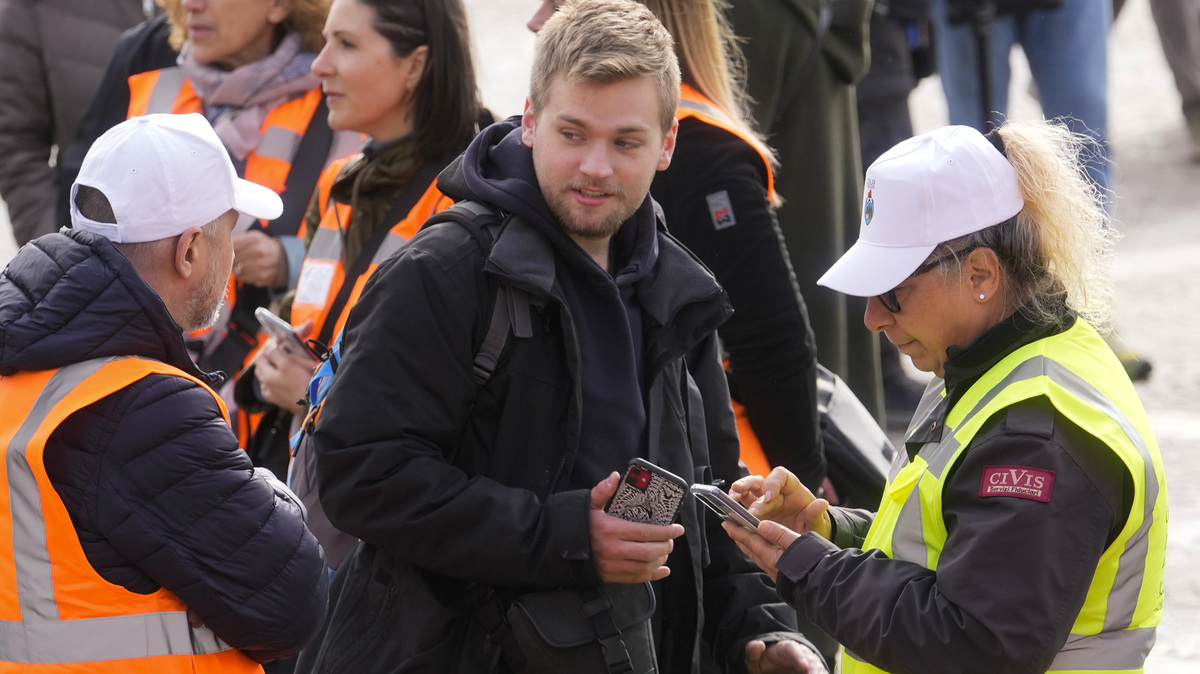
Stewards check access to a tourist’s QR code outside Venice’s main train station.
Luca Bruno/AP
A Smart Control Room created during the pandemic has been tracking arrivals using mobile phone data, roughly confirming pre-pandemic estimates of between 25 million and 30 million arrivals a year, said Michele Zuin, top economic official. from the city. This includes both hikers and overnight guests.
But Zuin said the data is incomplete.
“It is clear that we will get more reliable data from the contribution” paid by hikers, he said.
Venturini said the city is affected when the number of hikers reaches between 30,000 and 40,000. On peak days, local police established one-way traffic for pedestrians to keep the crowds moving.
Residents who oppose the tourist tax insist the solution to Venice’s problems is to increase the resident population and the services they need, limiting short-term rentals to make more housing available and attract families returning from the mainland. .
Last year, Venice passed a telling milestone when the number of tourist spots for the first time surpassed the number of official residents, which is now below 50,000 in the historic center with its picturesque canals.
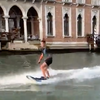
“Putting a ticket to enter a city will not reduce the number of visitors arriving by a single unit,” said Tommaso Cacciari, an activist who organized a protest against the measure on Thursday.
“You pay a ticket to take the subway, to go to a museum, to an amusement park. You don’t pay a ticket to enter a city. This is the last symbolic step of a project of an idea of this municipal administration to expel to the residents of Venice,” he said.
Venice officials expected paid tourist arrivals on Thursday to reach about 10,000. More than 70,000 people had downloaded a QR code indicating an exemption, including for working in Venice or as a resident of the Veneto region. Hotels in Venice, including those in continental districts such as Marghera or Mestre, must provide a QR code proving your stay, which includes the hotel tax.
Tourism chief Venturini said interest in Venice’s pilot program has sparked great interest in other places suffering from mass tourism, including other Italian arts cities and municipalities abroad such as Barcelona, Spain and Amsterdam.
But Marina Rodino, who has lived in Venice for 30 years, does not consider the tariff to be a panacea. Her neighboring apartments in her residential building near the famous Rialto Bridge, once inhabited by families, are now short-term rental apartments.
The butcher shop on the corner closed. However, he noted that the new entrance fee requirement will still allow young people to flood into the city at night for the traditional aperitif, which can get rowdy.
He was handing out fake European Union passports for “Venice, Open City,” underlining the irony of the new system and challenging its legal status with quotes from the Italian Constitution that guarantees its citizens the right to “move or reside anywhere in the world.” “. National territory.”
“This is not a natural oasis. This is not a museum. It is not Pompeii. It is a city where we have to fight so that the houses are inhabited by families and the shops reopen. That is what would counteract this wild tourism,” -Rodin said.
